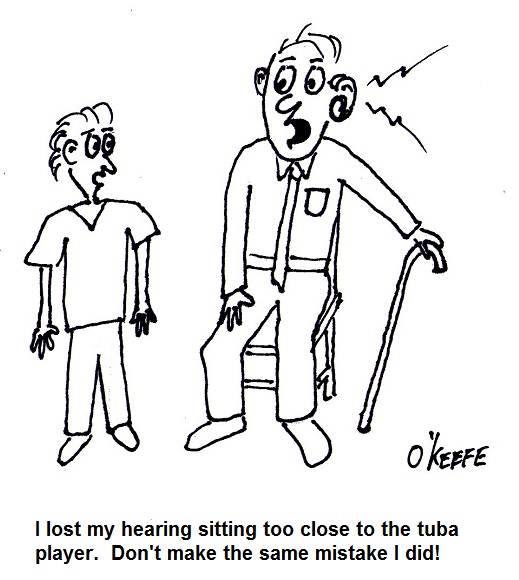| How do they do it? Your teenager is busily doing his homework, the sound on their stereo speakers cranked up way past the point of your comfort. As the heavy bass beats against your eardrums, their sound waves continue to travel throughout the house, crashing into walls and uprooting small objects from their positions on shelves. Thankfully, controlling this uncomfortable sound level is relatively easy, as you scream out, “Turn that music down!”
Many dangerously loud sounds are not so easily controlled, as when they take place in industrial settings. Here, when complex machinery and manufacturing processes are at full tilt, one can’t just turn a single knob or pull a plug to gain relief. Controlling sound levels in factories, power plants, and construction sites is often a complex task, relegated to engineers with state of the art equipment meant to measure and assess sound exposures in order to devise a strategy to control them. Let’s take a look at a few of these control methods. For our example, we’ll consider the challenge faced by a fictitious company, Widget USA. Business has picked up, and they need to install an additional manufacturing line in their factory. Now widget manufacturing machinery is notoriously noisy, and management is thinking ahead about protecting widget line workers from potentially dangerous sound levels. Their manufacturing engineers dutifully keep this in mind while devising their requirements specification, a list of “must haves” routinely included in quotation requests to potential manufacturers bidding on the job. Of utmost concern is to limit the number of decibels (dB) that the new widget machine can produce. If a manufacturer under consideration is unable to meet these requirements, Widget USA will take their business elsewhere. This methodology essentially nips the excessive noise problem in the bud, eliminating the noise source before it is introduced into the factory, and this is by far the best way of dealing with our scenario. Well suppose things aren’t as neat for Widget USA. Their factory contains many existing manufacturing lines with old, noisy machines. Sure, they’d like to replace them with newer, quieter ones, but there’s a problem, and it’s one all-too familiar to most companies: the expense involved. How can they most effectively deal with this situation? Perhaps Widget USA can modify their existing machinery, or perhaps their overall noise reduction objectives can be achieved by simply replacing worn parts that have a tendency to vibrate. If this measure isn’t sufficient, perhaps sound barriers can be introduced. Whether these are installed around entire machines or parts thereof, they are often effective at absorbing excessive noise. Barriers such as these are made of materials like plastic foam and mass loaded vinyl (MLV) which serve to muffle sound waves. Yet another approach to noise containment is to provide workers in the vicinity of the machinery with sound-absorbing personal safety equipment, ear plugs and the like. If the noise present is loud enough, perhaps a wall, reminiscent of the type often built along stretches of populated highway can be erected. Yet another way to deal with undesirable sound levels is to divert the noise to a location not normally occupied by humans. This is the tact often taken with industrial boilers. Their highly pressurized steam expands so rapidly it can create a deafening roar, and engineers often design piping systems which stem from the safety valve on the boilers themselves up to the roof of the building housing them. In this way the steam and its accompanying noise is safely redirected outside, where only the birds passing overhead will be bothered by it. This wraps up our discussion on sound, its measurement and containment. Perhaps you’ve learned a trick or two to help alleviated unwanted sounds in your environment, whether it’s produced by your teen or your neighbor’s leaf blower. _____________________________________________
|
Posts Tagged ‘sound level’
Sound and the Decibel
Sunday, November 7th, 2010| Hearing is one of our most valued senses. It, along with sight, is how we acquire most of the information available to us in our environment. But have you ever considered what sound actually is, or how it is perceived?
Sound, at its simplest, is a series of pressure waves traveling through a medium, whether that medium be a solid, liquid, or gas. Now let’s focus for a moment on the medium we’re most familiar with, which, unless you live underwater, is air. The last time you turned on the radio, I’ll bet you didn’t consider what makes it possible to hear sound coming from that box. How does that magical fete happen? Well, turning the knob on the box results in the amplification of electrical impulses produced by incoming radio waves broadcast from the radio station. These impulses power the speakers, causing them to vibrate. The vibrating speakers in turn create pressure waves in the surrounding air, and those waves will travel until they crash into an obstruction, such as the workings of your inner ear. At this point the magnificent human body comes into play, skin, bones, and fluid working together to convert the action of the pressure waves from your radio’s speakers into nerve impulses which find their way to your brain via your nervous system. Your brain interprets these nerve impulses and perceives them as music. If sound pressure waves are strong enough, they can crash against the workings of our inner ear and create damage. Damaging pressure waves can be created by things like sitting too close to the massive speakers at a rock concert, or a jet’s engine, as well as by many types of machinery present in a factory. In most cases hearing can be preserved by wearing appropriate protection, coupled with limiting the amount of time you are exposed to the loud source of sound. Both of these factors are important, as we’ll discuss later. Thankfully, there is high-tech equipment capable of determining whether sound pressure waves are capable of inflicting damage on our delicate organs, equipment which compares the source’s measured sound pressure to the sound pressure associated with the threshold of human hearing. By threshold, I mean the sound pressure at which our ear begins to perceive sound, which was determined by scientists to be 0.00002 Newtons per square meter, or N/m2. The Newton is a unit of measurement within the metric system used to quantify force, much as pounds quantify units of force/weight within the English system, and since pressure is force divided by area, we’ll be dealing with units expressed in N/m2. The sound pressure measurement is then converted to a sound pressure level, expressed in units of decibels, or dB, according to this formula: Lp = 20 × Log(p ÷ p0) where Lp is the sound pressure level in dB, p is the measured sound pressure, and as discussed previously, the threshold sound pressure, p0, equals 0.00002 N/m2. If you will remember from previous blog discussions, Log, a standard function on most calculators, is used to scale down the sound pressure level numbers, which tend to be quite large, into smaller, more evenly spaced numbers, making them easier to plot on a graph. Okay, so suppose you want to determine if a piece of factory equipment is dangerously noisy to those working around it. Using a sound level meter you would first measure its sound pressure, p, to be 20 N/m2. Applied to the formula given above, we calculate the sound pressure level to be: Lp = 20 × Log(20 N/m2 ÷ 0.00002 N/m2) = 120 dB Now bear in mind that 20 N/m2 is the level at which most people’s ears will start to hurt. Prolonged exposure at this level can cause damage to the ears and hearing loss. Depending on your exposure time to a sound source, even much lower sound pressure levels can lead to hearing loss. So how do we know where we’re at safety-wise with sound pressure levels and exposure times? Next week, we’ll find out when we look at exposure standards set up by the Occupational Health and Safety Administration (OSHA). _____________________________________________ |





